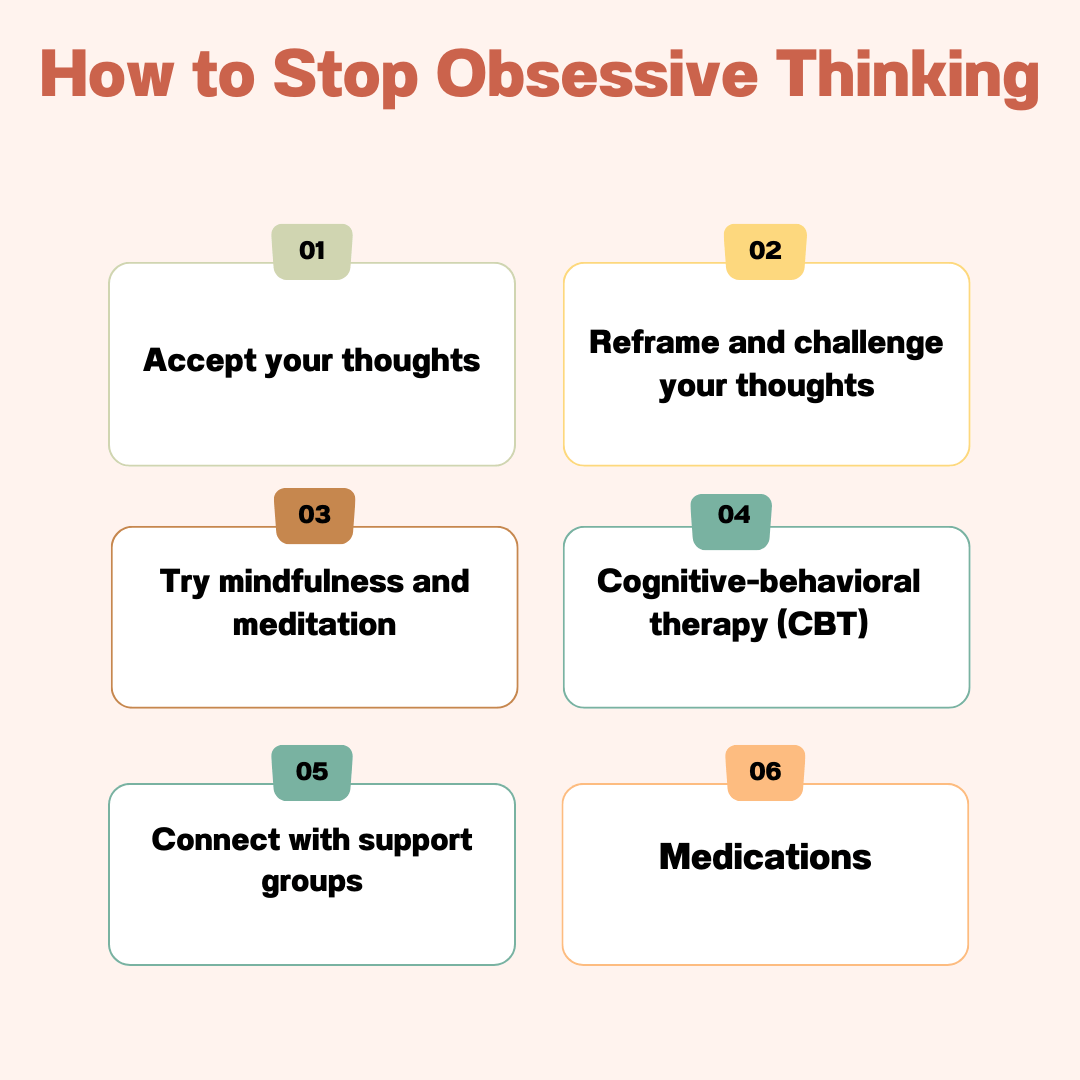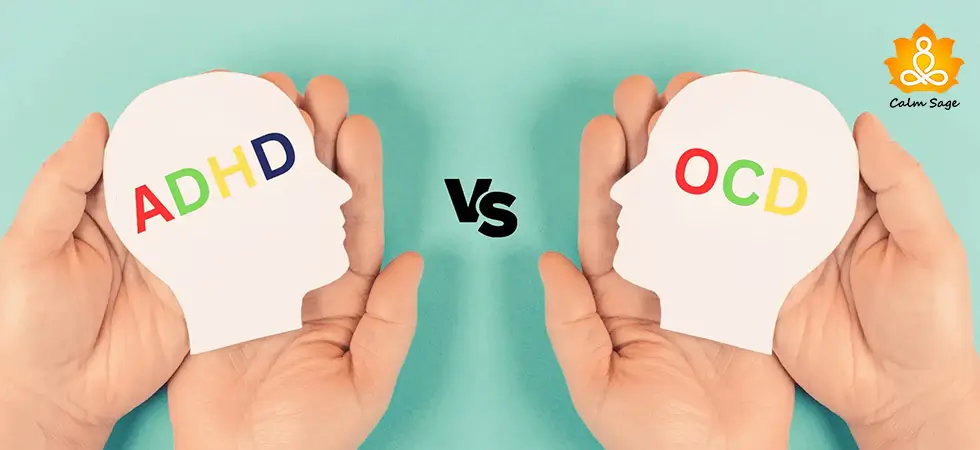How to Quiet the Mind and Control Obsessive Thoughts

There’s nary a moment where we don’t think. In our everyday lives, we are constantly bombarded with different thoughts, but when one thought keeps repeating in your head, and when you can’t stop thinking about the particular thought (even after trying to banish it), then it can be considered a borderline obsessive thought.
Now, you’ll agree with me when I say that worrying about or thinking about whether you’ve locked the door or turned the stove off is a common occurrence. It’s what we all experience, right? But, did you know that these kinds of obsessive thoughts or repetitive thoughts can be persuasive and even permanent for some people?
When you experience obsessive thoughts, they can become intrusive and can even begin to disrupt your daily functioning. Obsessive thinking, in many cases, can be an indication or a symptom of mental health disorders and in this article, we’re exploring the nature of obsessive thoughts and how you can break the cycle of obsessive thoughts.
What is Obsessive Thinking?

Obsessive thinking is a recurring pattern where distressing, unwanted, and intrusive thoughts occur with a side of mental images to support said thoughts. These thoughts are often irrational and you may, at times, feel compelled to engage in repetitive behaviors and/or rituals to quiet these thoughts and the anxiety that accompanies obsessive thinking.
Obsessive thoughts can revolve around a lot of themes and are almost always accompanied by feelings of intense anxiety, fear, discomfort, and guilt.
Some common themes of obsessive thoughts can include;
- Contamination
- Accidents
- Being embarrassed
- Forgetting something
- Losing something
- Death or harm to loved ones
- Loss of control, etc.
Obsessive Thoughts vs. Intrusive Thoughts
While intrusive thoughts and obsessive thoughts both include unwelcome and unwanted thoughts, there’s a subtle difference between these two types of thinking.
Intrusive thinking can be described as passing thoughts that spontaneously pop up in your mind and are often unrelated to your wants, desires, and intentions. These thoughts are quite strange and inappropriate but are always fleeting and do not cause intense distress or anxiety.
Here’s an example of an intrusive thought;
You keep thinking about your ex-spouse or partner after ending a relationship. This thought may affect your mood and even actions. But, with time, these thoughts lose their intensity and even outright stop.
On the other hand, obsessive thoughts can be described as persistent, distressing, and often irrational. They can cause severe emotional distress and can interfere with your daily functioning. Obsessive thoughts begin as intrusive thoughts but are more frequent, intense, and distressing than the latter.
Obsessive thinking can also look similar to rumination. The only difference is that rumination causes you to be stuck in the past, whereas obsessive thoughts often include fear and anxiety about the future as well.
Here’s an example of obsessive thinking;
You constantly think about your former partner or spouse and what they are doing now. You fear that you’ll embarrass yourself if you run into them. You may find it challenging to stop thinking about them and may develop sleep troubles or poor well-being in general because of the thinking.
Living With Obsessive Thoughts: The Effects

Obsessive thinking can have severe consequences on your well-being and health. Because of their persistent and distressing nature, these thoughts can cause high levels of anxiety, depression, and helplessness. The constant intrusion of obsessive thoughts can even make it harder for you to concentrate, make healthy decisions, maintain social connections, and develop poor mental well-being.
How someone experiences and is affected by obsessive thoughts depends on individual experiences. For some, these thoughts are just annoying whereas for others, these obsessive and repetitive thoughts are all-consuming.
Because our minds and bodies are so intrinsically linked, mental health conditions such as obsessive thinking can lead to physical health troubles such as high blood pressure, headaches, stomach issues, muscle pains, chronic health issues, and poor immunity.
Obsessive thoughts are also closely associated with OCD – obsessive-compulsive disorder – but they can also occur in other disorders as well, including;
- Post-traumatic stress disorder (PTSD)
- Postpartum depression
- Postpartum psychosis
- Eating disorders, and more.
How to Stop Obsessive Thinking?
While obsessive thoughts can be distressing, they are manageable. Here are some ways you can break the cycle of obsessive thoughts and stop obsessive thinking;

1. Accept your thoughts
You can stop obsessive thoughts by accepting they exist and that you’re experiencing them as a result of obsessive thinking. Accept and acknowledge that these thoughts are just thoughts and do not define you as a person. Know that you can exert control over your thoughts once again.
2. Reframe and challenge your thoughts
Next, you can try to challenge your thoughts and reframe them. Consider different explanations of the situation you’re in. Keep the alternative interpretations rational and question the evidence you have that supports the obsessive thoughts. If you face any cognitive distortions, challenge them before accepting them.
3. Try mindfulness and meditation
Practicing mindfulness and meditation exercises and engaging in deep breathing techniques can help you develop an awareness of your present. These exercises can help you let go of the obsessive thoughts and eventually reduce the intensity of these thoughts as well as the power they seem to hold over your actions, feelings, and emotions.
4. Change your lifestyle
You can stop obsessive thoughts by changing your lifestyle and habits. You can engage in regular exercise, eat healthier foods, get good sleep, and practice stress management techniques to lower the effects of obsessive thinking on your mental health and by extension, your physical health.
5. Cognitive-behavioral therapy (CBT)
CBT is one of the most recommended approaches that can help you manage your thoughts, even obsessive and repetitive thoughts. This therapy approach helps you identify and modify the thought patterns and beliefs that may contribute to obsessive thinking. You can reach out to a therapist to know more about this approach and how to begin.
6. Exposure and response prevention (ERP)
ERP is another approach in therapy that is mostly used to treat OCD. This therapy approach involves exposing yourself to situations and triggers that provoke obsessive thoughts while trying not to engage in the compulsions that accompany them.
7. Connect with support groups
You can also consider connecting with support groups for OCD to help get rid of obsessive thoughts. Joining support groups can help you feel a sense of community and having others who go through similar situations and experiences can help you navigate through yours.
8. Medications
In some severe cases, a psychiatrist may prescribe you medications such as SSRIs and antidepressants to help manage the symptoms of OCD, including obsessive and intrusive thinking. However, before taking any medication, it is recommended that you speak to a physician as some drugs may have side effects that may worsen your condition.
Wrapping Up
Obsessive thinking can take a significant toll on your mental and emotional well-being and can also affect the overall quality of your life and health. Knowing where your obsessive thoughts come from can help you figure out the best way to stop obsessive thoughts. With practice, patience, and help from a professional therapist, you can learn to take control of your thoughts once more.
If you’re experiencing obsessive thinking and if the obsessive thoughts are affecting your actions, emotions, and behaviors, then it is recommended that you connect with a professional for support.

Great for a large network of licensed therapists
-
$60 to $90/week, billed every 4 weeks
-
Therapy via messaging, phone, or live video chat
-
Flexible cancellation at any time
20% off your first month

Great for CBT Based therapists
-
$40/week, billed every 4 weeks
-
Therapy via messaging, phone, or live video chat
-
Specialization for CBT based Therapy
20% off your first month

Best for Treatment Plants
-
$60 to $90/week, billed every 4 weeks
-
Therapy via messaging, phone, or live video chat
-
Flexible cancellation at any time
$100 off your first month with code CALMSAGE
Know that you’re not alone in your struggles and that any kind of intrusive or obsessive thought is not your fault. These thoughts are just that…thoughts and can be overcome with a little help and support.
I hope this article helped you learn how to stop obsessive thoughts. Let me know what you think about obsessive thinking and its effects in the comments below.




















